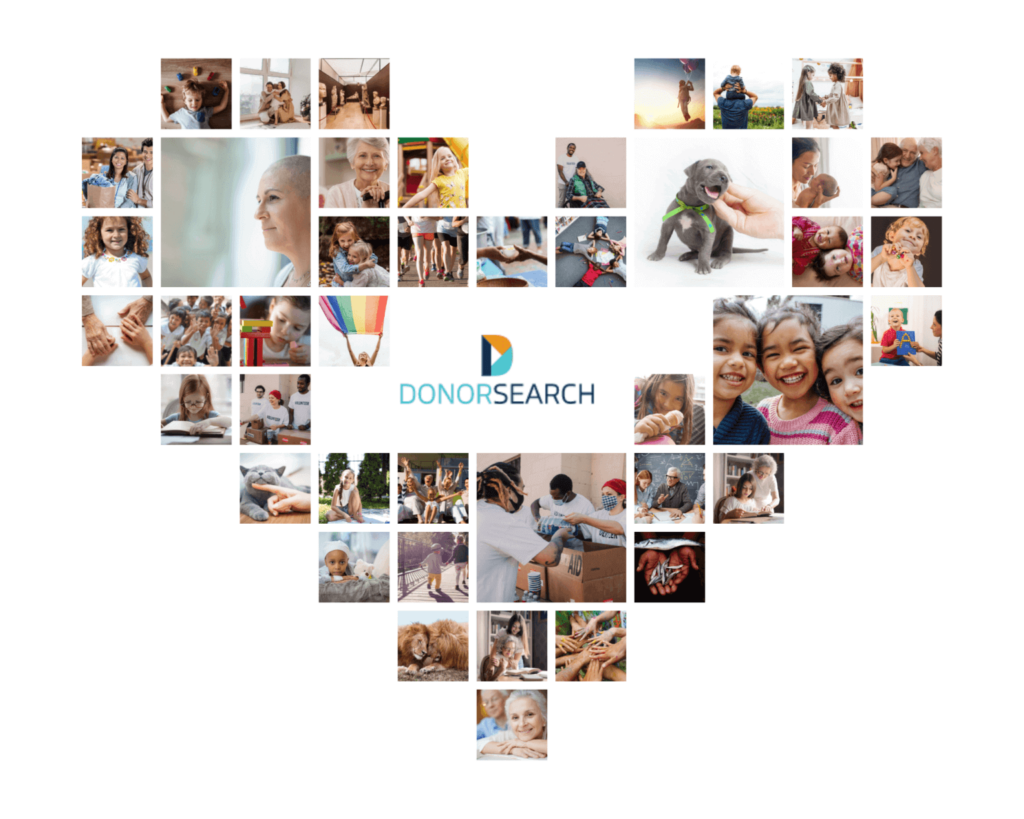As a nonprofit professional, fundraising is always on your mind. After all, the revenue you receive powers your operations and allows you to make a difference in your community every day.
However, there will likely be times when your organization needs to complete—and fund—a large-scale project outside of your usual activities. This is where capital campaigns come in!
If you’re considering launching a capital campaign (especially for the first time), you probably have many questions about the process. To help you get started, we’ve created this guide covering all of the basics you need to know to successfully plan and execute this fundraising effort. Let’s dive in!

Find qualified major donors for your next capital campaign with top-of-the-line prospect research and AI fundraising tools.
What is a capital campaign?
A capital campaign is a targeted fundraising effort that takes place over a defined period of time. Capital campaigns are all-hands-on-deck projects, requiring careful planning and dedicated effort from your whole team to achieve their goals.
Capital campaigns differ from other forms of fundraising in that they’re massive projects that often span multiple years and can cost millions of dollars. Therefore, their objectives are highly specific and clearly laid out as the campaign progresses, and their end goals are usually concrete and time-defined.
Are capital campaigns effective?
Launching a capital campaign may seem daunting if you’ve never done it before, but it may be comforting to know that these major undertakings have surprisingly high success rates. As the 2024 Capital Campaign Benchmark Report explains, 96% of organizations that run these campaigns consider them successful, and nonprofits raise an average of 106% of their original fundraising goals!
However, this report also shows that strategic planning drives nearly three-fourths of capital campaigns, and organizations that conduct feasibility studies (more on these later!) tend to establish more efficient fundraising systems and cultivate stronger donor relationships. So, capital campaigns are generally effective, but yours will likely go better if you plan well.
Purposes of Capital Campaigns
While healthcare organizations and educational institutions most commonly launch capital campaigns, any nonprofit with a major need that requires significant financial backing may choose to run one. These needs may include:
Benefits of Running a Capital Campaign
Naturally, the most significant benefit of running a capital campaign is generating the revenue you need to complete a large-scale project. However, there are some additional advantages your nonprofit can experience, such as:
- Increased community engagement. Capital campaigns can increase your organization’s visibility in its local community, spreading awareness of your mission and encouraging more people to get involved.
- Enhanced capacity to deliver services. Once you complete the project your capital campaign is intended to fund, you can use your new investments to significantly impact those you serve.
- Long-term donor relationships. During your capital campaign, you’ll likely acquire new high-impact donors and identify existing donors who could upgrade their giving. Then, you can cultivate relationships with them that lead to lasting support.
- Momentum for future fundraising efforts. The first capital campaign you run will probably be the most challenging. However, by completing it successfully, your team will gain experience and implement systems that will fuel future large-scale fundraisers. Plus, you’ll build trust with stakeholders who will be more likely to get on board next time since you’ve already proved that you can handle major campaigns.
To maximize these benefits, your team will need to strategically manage all of the key elements of a capital campaign. Let’s examine those components in more detail.
Planning a Capital Campaign
The overarching questions you’ll need to ask to get your capital campaign off the ground are:
- What do we want to accomplish?
- How will we go about achieving it?
- Who will be responsible for getting us to our goal?
Since we’ve already covered the what—the purposes of capital campaigns—let’s dive into the how and who of these fundraising efforts.
Steps to Launch a Capital Campaign
To make these large fundraising undertakings more digestible, we’ve divided the capital campaign planning and execution process into seven steps for your nonprofit to follow.
-

1. Pre-Planning
The pre-planning phase begins as soon as your organization identifies a funding need and decides that a capital campaign is the best way to meet that need. Then, you’ll establish a preliminary overarching goal and create the first versions of your campaign plan, timeline, budget, and case for support.
-

2. Feasibility Study
Conducting a feasibility study will help you determine if your nonprofit has the resources, bandwidth, and stakeholder buy-in to complete a capital campaign. Working with a fundraising consultant can make this process easier and provide an objective perspective on whether your organization is ready or if you need to wait to launch your campaign.
-

3. Planning
Once you know that a capital campaign is feasible for your nonprofit, finalize your planning documents and assemble your team. Also, create a gift range chart and start conducting prospect research at this stage so you can enter the quiet phase prepared to solicit major gifts.
-

4. Quiet Phase
The quiet phase takes place before you announce your campaign to the public and can last a year or longer. Major donor fundraising should be your priority so you can fill in your gift range chart, along with collecting leadership and board gifts. You’ll likely raise about 70% of your funds during this phase.
-

5. Campaign Kick-Off
Once you conclude the quiet phase, you’ll launch your capital campaign publicly. Host a launch event for your community, begin a major multi-channel marketing push, and reach out to the local press to expand your reach even further.
-

6. Public Phase
During this phase, you’ll collect small and mid-size donations using similar methods to other fundraising initiatives, such as events, crowdfunding, and peer-to-peer campaigns. Consider tapping into corporate philanthropy opportunities like matching gifts, sponsorships, and employee fundraising initiatives to help you achieve your goal as well.
-

7. Wrap-Up
After you reach your capital campaign deadline, evaluate what aspects of the process went well and where you have room for improvement. Additionally, thank everyone who made your campaign possible—donors at all levels, board members, corporate and media partners, volunteers, and staff members.
Capital Campaign Key Players
Your approach to a capital campaign will only be as strong as your team. Let’s discuss all of the internal and external individuals you’ll need on your side for your campaign to succeed.
Internal Team Members
Capital campaigns are an organization-wide effort, requiring support from your:
- Staff: Executive leadership, major gift officers, prospect researchers, volunteer coordinators, event planners, marketing coordinators, and various other nonprofit employees will all need to contribute their unique expertise to your capital campaign.
- Board members: Your board of directors will be involved in the day-to-day planning and execution of your campaign in addition to providing strategic oversight. They’ll also need to approve campaign-related expenditures and should help your team secure major gifts. Additionally, they should consider how they want to participate in giving themselves (about 15% of capital campaign revenue typically comes from board members—less than in the past, but still a significant amount).
- Volunteers: Fill any campaign staffing gaps with the talents of your most loyal volunteers. Whether they’re sharing their personalized peer-to-peer fundraising pages or setting up for your launch party, volunteers will provide your team with additional bandwidth and help you reach more supporters than you could on your own.
From your internal team members, form a planning committee (who will, of course, plan the campaign) and a steering committee (who will be in charge of ongoing campaign maintenance). You’ll likely also form ad hoc committees for activities like budgeting, event planning, and marketing.
Most organizations recruit a volunteer campaign chair to oversee all committees and promote the campaign in the community, although some elect a board member or staff leader as the chair.
External Capital Campaign Consultants
Many nonprofits that conduct capital campaigns hire external consultants to help with some aspects of their efforts. While some consultants will chair the campaign themselves, others will provide advisory services and resources to help your team do most of the hands-on work.
Before hiring a consultant, make sure you know what you’re looking to get out of the partnership. Some questions to ask yourself as you start considering candidates include:
- What is your budget for working with a consultant?
- What kind of access do you need to your consultant (full-time in-office assistance, intermittent remote sessions, or somewhere in between)?
- Do the consultants you’re considering have high-quality samples of their work and positive reviews from past clients to show?
- Are your organization’s leaders on board with your hiring decision?
Your consultant should be committed to bringing your nonprofit’s vision for a capital campaign to life. Look for one who can serve as a true partner and is invested in your organization’s success.
Essential Tools for Running a Capital Campaign
Once you’ve mapped out your capital campaign and assembled your team, you also need to ensure you have the right software in your toolkit to help you succeed. If your nonprofit hasn’t already invested in the following solutions, make sure to do so:

-
Nonprofit CRM
A robust constituent relationship management (CRM) system is essential for identifying potential donors within your existing supporter base and tracking data throughout a capital campaign. Make sure your CRM integrates with your other research and fundraising tools for seamless data transfer (DonorSearch integrates with 40+ providers).
-
Prospect research database
A comprehensive database allows your organization to find potential donors with the capacity, affinity, and philanthropic tendencies that make them likely to contribute to your capital campaign. DonorSearch offers the largest prospect research database on the market, consisting of more than one billion data points and boasting an accuracy rate above 90%.
-
Prospect reporting platform
Prospect generator tools like DonorSearch’s ProspectView Online 2 (PVO2) summarize prospect research data into customizable, AI-powered reports so you can understand current and potential capital campaign donors at a glance and easily determine your next steps for cultivation.
-
Predictive modeling solution
These AI tools prioritize your prospect lists and suggest which capital campaign donors to reach out to first, allowing you to drive better results while saving time and resources. DonorSearch Ai and Enhanced CORE are the most advanced predictive modeling solutions in the nonprofit sector, both of which rate prospects based on a variety of giving likelihood factors.
Discover how our wealth and philanthropic screening tools, PVO2, DonorSearch Ai, Enhanced CORE, and CRM integrations can help your nonprofit kickstart its capital campaign!
Nonprofit Capital Campaign Examples
If your nonprofit is ready to launch its own capital campaign, draw inspiration from these examples from real DonorSearch clients!

The Dynamic Catholic Institute
The Dynamic Catholic Institute leveraged DonorSearch’s prospect research tools during a capital campaign to launch its Catholic Moments program, which involved the creation and distribution of short films to help Catholic Church members celebrate key moments in their religious lives. With accurate donor insights on their side, they achieved their $25 million fundraising goal!

DuBois Central Catholic School
Brookgreen Gardens launched their $25 million Campaign for the Next Generation to raise funds for a new conservatory and expanded educational experiences for visitors. The campaign hit a standstill at $18 million, so they turned to DonorSearch to help them find more high-impact donors. With deeper insights into their existing supporters and newly data-driven fundraising appeals, they’ve raised an additional $5 million and are back on track to reach their goal!

Children's Healthcare of Atlanta Foundation
The Children’s Healthcare of Atlanta Foundation completed a $1 billion capital campaign to build a brand-new, state-of-the-art facility for pediatric medical care—the Arthur M. Blank Hospital,
which opened in September 2024. As they assessed their results, they proactively invested in DonorSearch Ai to streamline their major gift solicitation processes and set themselves up for even more success with future campaigns.
Final Thoughts
Planning, launching, running, and completing a capital campaign is a major feat for any nonprofit. But by having a comprehensive understanding of the fundamentals of a capital campaign and knowing where you can turn for assistance and advice, you can set your organization up for success in funding its most critical projects and initiatives.
For more information on the various elements of capital campaigns, check out these resources:
- Major Gifts: A Guide to Securing Large Donations. Discover our top strategies for securing the high-impact donations that will fuel the quiet phase of your organization’s capital campaign.
- 15+ Best Prospect Research Tools to Find High-Impact Donors. Explore the best solutions available to help your nonprofit dig deeper into its potential capital campaign donors’ wealth and philanthropic histories.
- Nonprofit Donor Retention: How to Secure Long-Term Support. Learn how to keep the donors you acquire during your capital campaign engaged with your organization for the long haul.

Comprehensive prospect research is essential for a successful capital campaign. DonorSearch can help you identify the best potential donors to get you to your goal.












